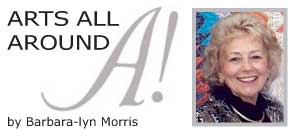

Taking about an hour to drive, most folks choose Interstate 25 North as the fast track from Albuquerque to Santa Fe, New Mexico. I prefer the backcountry way on Highway 14. Named the Turquoise Trail, it is a National Scenic Byway that once was an important route for indigenous people trading in turquoise, the valuable blue-green gemstone found in the surrounding hillsides.
The Byway winds through the foothills of the majestic Sandia Mountains in central sun-scorched New Mexico. With few structures or other evidence of people along the way, one begins to have a forlorn feeling until suddenly the highway becomes the main street of Madrid (pronounced MAD-rid).
After coal was discovered in 1906, Madrid became a prosperous company town with a peak population of 4,000. Following World War II, the population plummeted to fewer than 50. Virtually a ghost town for 20 years, the abandoned clapboard homes, taverns, and stores attracted a few vagabonds through the 1960s. For about 25 years, the population grew by a few new residents and business ventures each year.
Now Madrid has a steady population of about 200, with a strong but informal governance system composed of the Madrid Landowners Association, the Merchants Association, and the Cultural Project. A relatively new merchant, Corey Horne, jokes: "As long as McDonald's doesn't show up, we are all generally on the same page." Still the talk of the town is the summer 2006 filming of the conclusion of "Wild Hogs" in Madrid. "They took over the place," Horne explains. "This was the barber shop."
The center of town is the boardwalk on the right side of the road going north, where an array of businesses have come and gone through the recent years of development. Today, there are three distinctive boardwalk galleries that would make Madrid a destination for any contemporary art lover.
Indigo Gallery, at the north end of the boardwalk, features the works of owner/artist Jill Shwaiko. Her bronze sculptures, based on big horn sheep petroglyphs, have an endearing quality and are beautifully displayed in a small sculpture garden out back of the gallery. The sculptor says, "They have personalities much like we do, representing both our grandeur and frailty." Her red teepee oil pastel paintings, likewise, leave an imprint that reflects the "delight and joy" she likes to express in her work.
At the other end of the boardwalk, the recently expanded Jezebel Studio and Gallery features the glass and iron designs of the owner/artist Jezebel Wells. Her contemporary lighting designs (sconces, pendants, and chandeliers) reflect organic forms from nature, such as her popular "Magnolia Blossom Chandelier." These bookend boardwalk galleries also carry the works of artist friends who share similar concerns for excellent design and novel approaches to their media.
The middle gallery on the Madrid boardwalk is the quirkiest, most innovative, surprising place I have ever stepped in. I know that threatens to be hyperbolic, but I stand by it! Describing it will be a challenge - so much is demanded by the over-stimulation of the eye upon a first or second visit and so much stays in the memory bank upon leaving.
For example, consider the name: ROCKpaper Gallery. Say "rock, paper" and one naturally completes the phrase of the childhood game with "scissors." Such is the game the owners/artists/designers play with the mind and eye throughout the store.
Inside the rambling store, there are scissors and more scissors EVERYWHERE -- hundreds of them. Some are for sale, most are not; some are antique, some new. When I ask about the scissors, the two owners say almost in unison, "People bring us scissors! We love it!"
In describing their place, owners Corey John Horne and Christopher (Crico) Baker almost rap: "It's a fine arts gallery...a folk art haven...a natural science museum (think snake skins, bird nests, bones, horns, specimens....), it's an international bazaar, and it's an alchemist's workshop." Horne makes fragrances and soaps. Baker is described by his colleague as a "display wizard." A Buddhist friend goes once a year to India and selects quality furniture and unusual architecturals, such as a 17th-century "Spirit House," a pair of massive teak columns, and spectacular 300-year-old doors.
To my surprise, two of the featured artists at ROCKpaper are from Tennessee: Johnny Taylor and Jay Etkin. Taylor hails from Memphis and now lives in Santa Fe. I was really taken with his multi-hued acrylic canvases that incorporate graphics and sharply designed images. (Wish I had bought one of the small canvases featuring a magical hummingbird.)
Jay Etkin is an artist who owns a huge gallery in Memphis. His work at ROCKpaper has a folk-art like quality. The works of Taylor and Etkin help to convey the multi-layered mystery represented throughout this gallery/general store/bazaar.
Horne and Baker came specifically from other states to New Mexico because they "love the landscape and wanted to get away from the snow of the north." They specifically settled in Madrid because it is a "quaint and magical hidden garden, antiquated and a bit thorny," says Baker. Such words likewise describe their place, a fusion of art, creative displays, antiques, and novelties that give a sense of friendly accessibility to all, from a grandchild to the serious collector.
When I expressed curiosity about the broom head lamps and Mason jar chandelier, Horne laughs and explains, "They were born out of boredom last winter" when an unprecedented four feet of snow shut down the town for several days. Baker then chimes in, "We thought we had left snow behind but found ourselves in a one-shovel town."
Nevertheless, the creative energy and friendliness of the citizens during the storm confirmed their decision to relocate. Horne concludes, "Madrid is soon to be highly recognized and celebrated as the incredibly talented and unique art satellite that it is."
I couldn't agree more and eagerly look forward to my next stop at this expanding "wide place in the road" called Madrid, on the Turquoise Trail in central New Mexico.